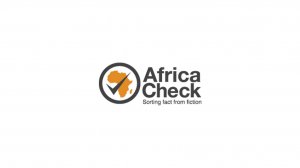Under the headline “Nigeria highest producer of HIV-infected babies”, the Sun newspaper reported on a new project to prevent the virus from being passed from HIV-positive mothers to their babies.
At the launch, Nigeria’s minister of health Isaac Folorunso Adewole said “there is absolutely no reason why Nigeria should be a major producer of HIV infected babies. We contribute about 30% and our goal is elimination. We believe it’s doable.”
The World Health Organization defines mother-to-child transmission of HIV as the transmission of the virus from an HIV-positive mother to her child during pregnancy, labour, delivery or breastfeeding.
37 000 kids newly infected in Nigeria in 2016
Adewole told Africa Check he was referring to UNAids data which showed that in 2016, Nigeria had the highest share (26.9%) of new mother-to-child HIV infections among the organisation’s 23 priority countries.
“This was based on available data at the time using the existing figures for national HIV prevalence, total population, fertility rates and the actual coverage of antenatal care and HIV services,” he said.
Gatien Ekanmian, a strategic information advisor at UNAids, told Africa Check the organisation uses such data to feed into statistical modelling software.
For 2016, UNAids estimated that 37 000 children younger than 15 were newly infected with the virus in Nigeria. Mozambique followed with 9.6% of new infections (13 000 children) and South Africa with 8.6%, or 12 000 children.
Uncertainty in estimates of child infection
But the estimated number of newly infected children in Nigeria could be as low as 22 000 or as high as 56 000. This is because researchers need to make more assumptions when it comes to estimating the number of infections in children, UNAids explains. This increases uncertainty.
“For example, the ranges around the estimates of adult HIV prevalence are smaller than those around the estimates of HIV incidence among children, which require additional data on prevalence among pregnant women and the probability of mother-to-child HIV transmission, each of which have their own additional uncertainty,” the method document states.
Though the data is for children younger than 15 and not just babies, Ekanmian said UNAids believed other modes of infection “cause a small fraction of the overall number of children acquiring HIV”.
New HIV/Aids study for Nigeria
But more accurate data may soon be available.
“Currently, Nigeria is conducting one of the biggest surveys globally, known as the Nigeria HIV/Aids impact and indicator survey, which is expected to have a preliminary data early 2019,” Ekanmian said.
Frank Lule, the regional adviser on HIV/Aids at the WHO Regional Office for Africa, said the survey would probably show that mother-to-child transmission was lower than the rates reported before. This was because in the past, census data was used to estimate the number of children born to HIV-positive women and this tended to increase the number of children thought to have contracted HIV from their mothers.
Pregnant mothers can take precautions
Dr Awoyemi Abayomi, a senior lecturer in the department of biological sciences at the Tai Solarin University of Education, said lack of awareness was one reason for Nigeria’s high mother-to-child transmission rate.
“Nigerian women infected with HIV are not aware of the necessary precautionary measures to take before, during and after pregnancy. To correct the statistic, there is the need to tackle this issue.”
The country’s MICS survey found that in 2007 only 13% of Nigerian women had been tested for HIV and knew their status. This figure fell to 11% in 2012, but increased to 34.8% in 2016/17.
Conclusion: In 2016 Nigeria had the highest number of newly infected HIV-positive children out of 23 countries
Reporting on the launch of a new project to prevent HIV from being passed from mothers to their babies, Sun newspaper said Nigeria was “the highest producer of babies infected with HIV”.
UNAids data shows that in 2016, Nigeria had the highest share (26.9%) of new mother-to-child HIV infections out of 23 priority countries. It estimated that 37 000 children younger than 15 were newly infected with the virus.
But because data on HIV in children is uncertain, this number could be as low as 22 000 or as high as 56 000.
Nigeria is currently conducting one of the world’s biggest HIV/Aids impact studies. This may provide a better picture of HIV infection in the country’s children.
Researched by Motunrayo Joel, Africa Check, a non-partisan fact-checking organisation. View the original piece on their website
EMAIL THIS ARTICLE SAVE THIS ARTICLE
To subscribe email subscriptions@creamermedia.co.za or click here
To advertise email advertising@creamermedia.co.za or click here











